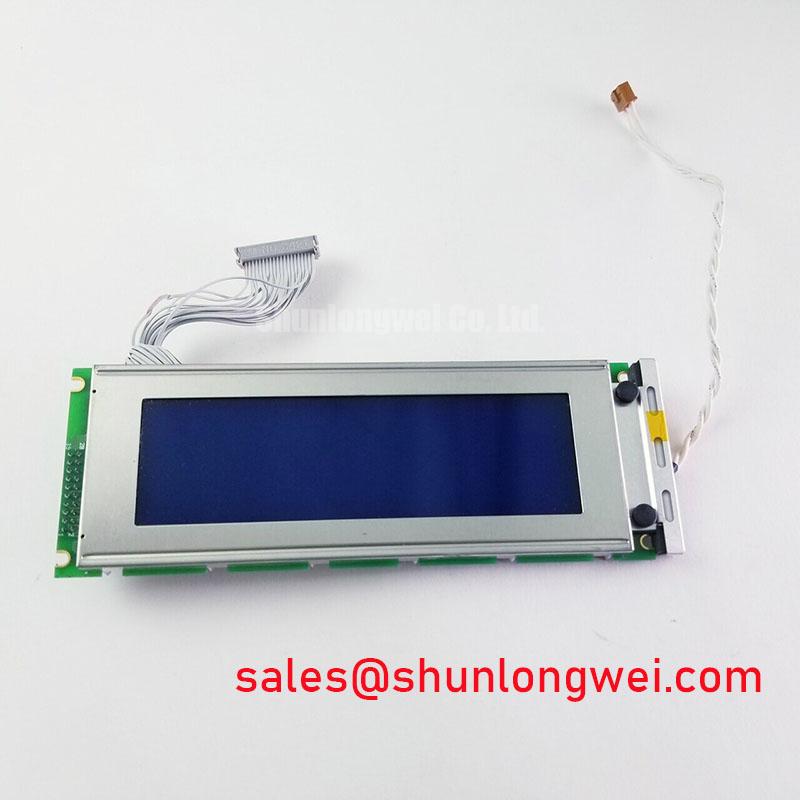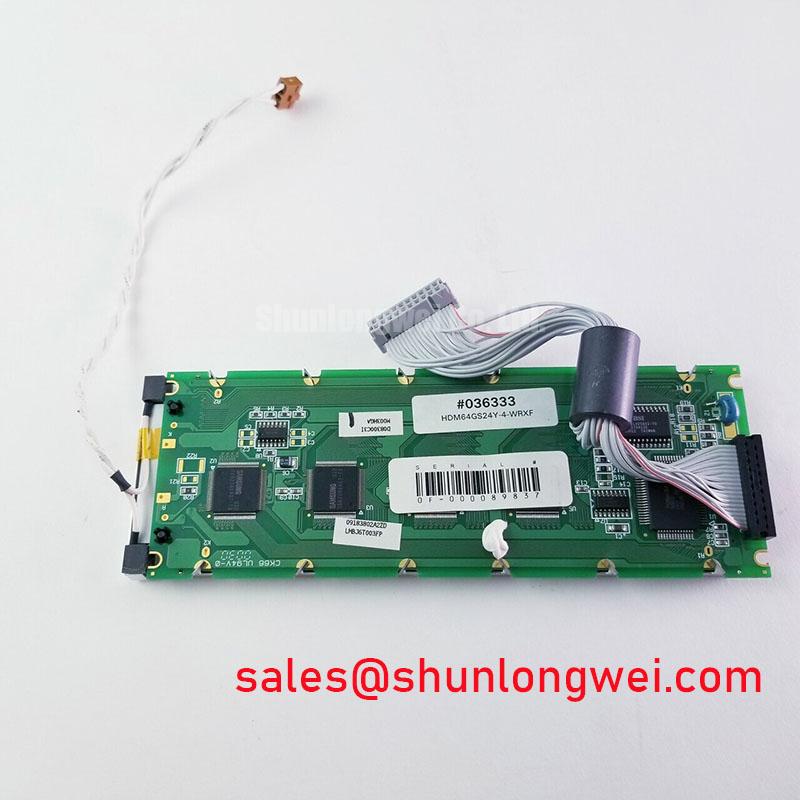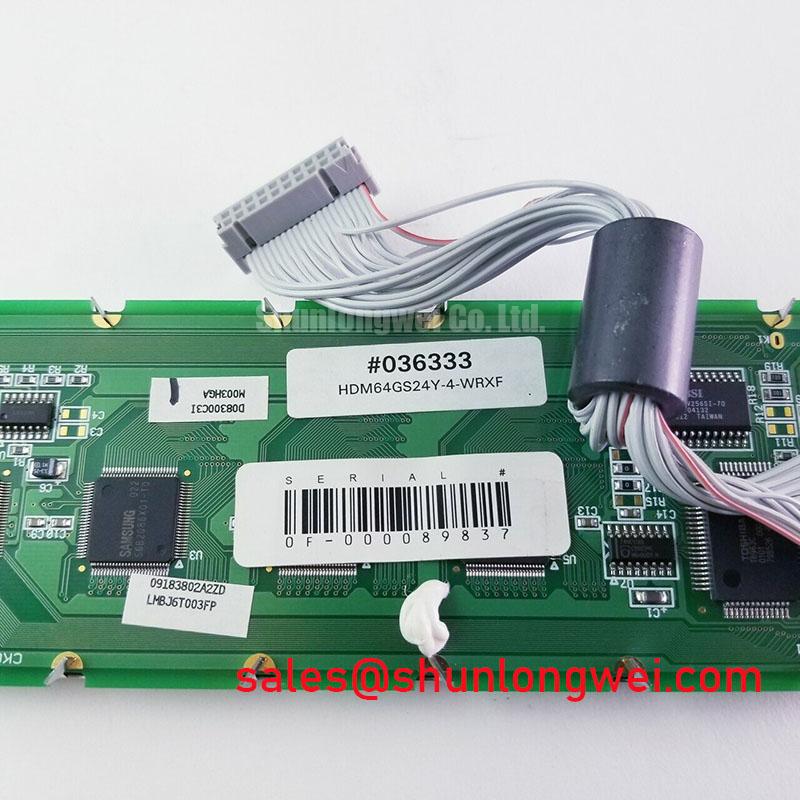Content last revised on November 21, 2025
HDM64GS24Y-4-WRXF: 240x64 Graphic LCD with Integrated T6963C Controller
Product Overview
Accelerating Embedded HMI Development
The Hantronix HDM64GS24Y-4-WRXF is a 240x64 monochrome graphic LCD module engineered to simplify system integration and ensure operational reliability in demanding environments. Its core value proposition is the on-board Toshiba T6963C controller, which offloads critical display functions from the host processor, enabling faster development cycles. Key specifications include: 240x64 Resolution | Integrated T6963C | -20°C to +70°C Operating Temperature. This integration provides two primary engineering benefits: drastically reduced software overhead and simplified hardware interfacing. For engineers developing portable test equipment or industrial control panels, this display addresses the critical need for a robust, easily programmable graphical interface that operates reliably across a wide temperature spectrum. Best Fit: For industrial or medical devices requiring a reliable, low-power graphical display with a simplified control interface, the HDM64GS24Y-4-WRXF provides an optimal solution.
Application Scenarios & Value
System-Level Benefits in Industrial and Medical Instrumentation
The true value of the HDM64GS24Y-4-WRXF is realized in its target applications, where clarity, reliability, and ease of integration are paramount. Consider the design of a portable environmental monitoring device. The engineering challenge is to create a clear Human Machine Interface (HMI) that functions flawlessly whether used in a cold storage facility or in warm field conditions. The module's wide operating temperature range of -20°C to 70°C directly addresses this challenge, ensuring display legibility and electronic integrity without the need for auxiliary heating or cooling components. What is the primary benefit of its integrated controller? It significantly simplifies the interface to a standard 8-bit parallel bus, a common feature in many embedded systems.
Furthermore, the built-in T6963C controller acts as a dedicated graphics co-processor. This allows the main system microcontroller to offload tasks like cursor management, character generation, and graphic RAM addressing. The result is a more responsive user interface and freed-up processing power for the host MCU to perform its primary data acquisition and analysis functions. This architecture is a distinct advantage in real-time systems where CPU availability is critical. For systems requiring higher data density, the related KCG057QV1DB-G000 offers a 320x240 resolution platform.
Key Parameter Overview
Functional Specifications for System Integration
The following parameters for the HDM64GS24Y-4-WRXF are essential for hardware and software design. The specifications are organized by functional block to streamline the engineering evaluation process. This module is designed for a single +5V power supply, simplifying power tree design thanks to its on-board negative voltage generator.
| Display Characteristics | |
|---|---|
| Display Format | 240 x 64 Dots |
| LCD Controller | Toshiba T6963C (or equivalent) |
| Display Mode | STN / Yellow-Green / Transflective |
| Backlight | LED (White) |
| Electrical & Environmental Ratings | |
| Logic Supply Voltage (Vdd) | 5.0V (Typ.) |
| Operating Temperature | -20°C to +70°C |
| Storage Temperature | -20°C to +70°C |
| Mechanical Specifications | |
| Module Outline (W x H x D) | 180.0 x 65.0 x 14.0 mm (Max) |
| Viewing Area (W x H) | 133.0 x 39.0 mm |
| Dot Size (W x H) | 0.49 x 0.49 mm |
Frequently Asked Questions (FAQ)
Engineering Clarifications
How does the integrated negative voltage generator impact my power supply design?
It significantly simplifies your design by eliminating the need for a separate negative voltage rail to drive the LCD. The module generates the required negative voltage internally, allowing it to operate from a single, standard +5V DC supply. This reduces BOM cost, minimizes PCB layout complexity, and shrinks the overall footprint of your power delivery network.
What are the main advantages of the T6963C controller for firmware development?
The T6963C's primary advantage is its high-level command set that manages the display RAM. Instead of manually calculating pixel addresses and writing raw data, your firmware sends simple commands to draw text, graphics, or manage different display layers. This abstraction layer dramatically reduces development time and code complexity, a key benefit detailed in many guides on industrial display applications.
Technical Deep Dive
Maximizing Design Efficiency with the T6963C Controller
The integration of the Toshiba T6963C is the defining feature of the HDM64GS24Y-4-WRXF, directly contributing to design simplification. This controller is essentially a specialized microprocessor for display operations. Think of it as a dedicated GPU for a monochrome display. Without it, the host MCU would be responsible for constantly refreshing the screen, calculating character locations, and managing the graphics buffer—consuming valuable clock cycles. The T6963C handles these tasks autonomously. Its internal character ROM and bit-mapped graphics capabilities allow for complex screens to be built with minimal overhead from the host processor. For designers, this means an 8-bit microcontroller with limited memory can drive a sophisticated graphical interface, an outcome that might otherwise require a more powerful and costly processor. This efficient division of labor is a cornerstone of robust embedded system design, a principle shared by leading display manufacturers like Tianma.
For more insights into creating robust and reliable user interfaces, explore the engineering principles behind displays for heavy machinery. To assess the suitability of this module for your next project, review the detailed command set and interface timing in the official product datasheet.






